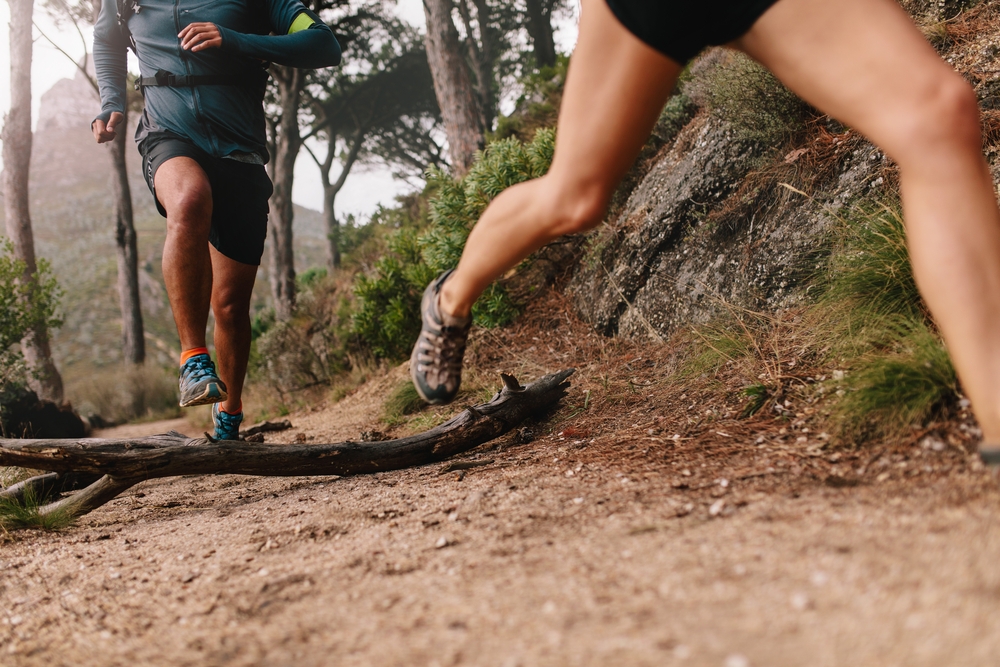Running has one of the highest injury rates of any sport. Why? Because it involves repetitive loading of the same joints, tendons and muscles. This type of loading leads to overuse injuries including shin splints, achilles tendon pain, “runner’s knee” and ITBS. However, one of the best training strategies is hill running!

Hill running is a staple of many elite runners training programs, from 5,000m runners to ultra-marathoners. Training on hills has multiple advantages to training on the flat. We’ll talk about these advantages and give examples of hill running workout sessions below.
Hill running increases strength
Most runners know that strength training isn’t just for the gym junkies. However, most runners would rather be out on the trails than stuck inside the gym. Fortunately, running uphill can provide a significant strength stimulus for your quadriceps, gluteals and calves, one that doesn’t require heading tot he gym.( Note: We still recommend heavy weight training in combination with hill running)
Running up hills reduces injury risk
Although hill running is not a panacea for all running injuries, it can help reduce injury risk when done regularly. The improvements in strength from hill running help reduce risk of injury (see strength training for runners article). Hill running also reduces load on your joints compared to running on the flat. This reduced joint load reduces risk of overuse injuries.

Uphill running workouts
Uphill running workouts come in many shapes and sizes. The specific workout that is best for you depends on you current abilities, training program, physiological aim of the session as well as your own preferences.
Uphill running sessions can be anywhere from uphill sprint intervals to long steep uphill hikes with a weighted vest. We will explore a few examples of uphill running sessions you can include in your
Uphill Running Workout #1: The Sprinter
The aim of hill sprints is to improve neuromuscular control and to increase power of glutes, quads and calf muscles. these should be done on steeper inclines.
- Warm up: 10 minute jog at conversational pace
- 10 x 30s all out hill sprints with 2- 3 minutes rest jog at slower than marathon pace between reps.
- Cool down: 10 minute jog at conversational pace
Uphill Workout #2: The Grinder
The uphill grinder involves longer intervals. These intervals help improve lactate threshold and general aerobic fitness. These are a good precursor to flat ground interval as they help build strength and aerobic fitness without the risk of overload related injuries seen in flat ground interval.
- Warm up: 5 minute jog at conversational pace
- 5-8 x 3-4 minute uphill jogs at a “comfortably hard” pace with rest breaks during the downhill jog.
- Cool down: 5 minute jog at conversational pace
Uphill Workout #3: The Weight Junkie
This type of uphill workout requires a weighted vest or a pack with weights inside. This hill workout is perfect for those training for trail races and ultra marathons with lots of vertical incline. The aim of these is to improve strength endurance as well as pure lower limb strength.
This workout involves quick uphill hiking. Either in one single push for those who live near a descent mountain, or in hill repeats without rest breaks for those without a mountain nearby. Aim to increase the carrying weight and overall time of the workout as you progress. We recommend quick hiking rather than running, as running with a weight vest can increase joint loads dramatically.
Downhill Running
With every up, there is a down. Check out our article on how specifically training downhill running is essential for all trail and ultra-marathon runners.
References
Hamner, S. R., & Delp, S. L. (2013). Muscle contributions to fore-aft and vertical body mass center accelerations over a range of running speeds. Journal of biomechanics, 46(4), 780-787.